Welcome Home
Building space for multi-generational living

Welcome Home is a series where we share stories from clients detailing their motivations and reflections on their ADU journeys. We hope their experiences and insights will enrich your exploration and help shape your vision.
For over forty years, the Wilson family has cherished their single-family home in the East Bay. When Chris returned to live with his retired parents, Lucy and Rick, after a significant life change, the trio found the day-to-day dynamic harmonious and supportive, deepening their family bonds.
Recognizing the potential of their spacious yet underutilized backyard, they thoughtfully decided to build an ADU that would become Chris' primary residence. This opened the door for him to pursue homeownership in a tough market, creating more options for future living arrangements as his parents age.
What inspired you to build this ADU?
Chris:
Two years ago, I went through a life-changing event, i.e., I got divorced. So, I moved back home to figure out my next steps, and once I got my bearings and handled my affairs, I was ready to figure out my living situation. I always saw myself renting a place in El Cerrito or Berkeley near home to be closer to family, and I was done with San Francisco.
Over many discussions with my parents and family, the idea of an ADU became more and more appealing, especially for the proximity and support for my parents, as well as their support for me. The financial thing was huge. Renting a place certainly would provide me with independence, but then your money is going nowhere. Paying a mortgage seemed more sensible. So, we decided to invest in the property and build its value, and it's a win-win in all those respects.
The ADU gave us a lot of options and flexibility for the house. Of course, my living in it was the primary function of it, but we realized that the multi-level main house is not ideal as my parents get older. They can live in the ADU, I could come back to the big house, or we could rent the ADU if something were to happen. It gave us all these options on top of all the financial considerations. There's a lot of flexibility with it that we really like, and we can see it going in a lot of different directions. It makes sense for us.
What made the space unusable before the ADU?
Rick:
Well, we're across from the Golden Gate, and it’s extremely windy and foggy here. At one time, we considered building a sports court, and we realized we couldn't even throw a ball up in the air because it would blow back to the house. And given that the deer would eat anything, we couldn't have a garden. It was a nice space, but wasted.
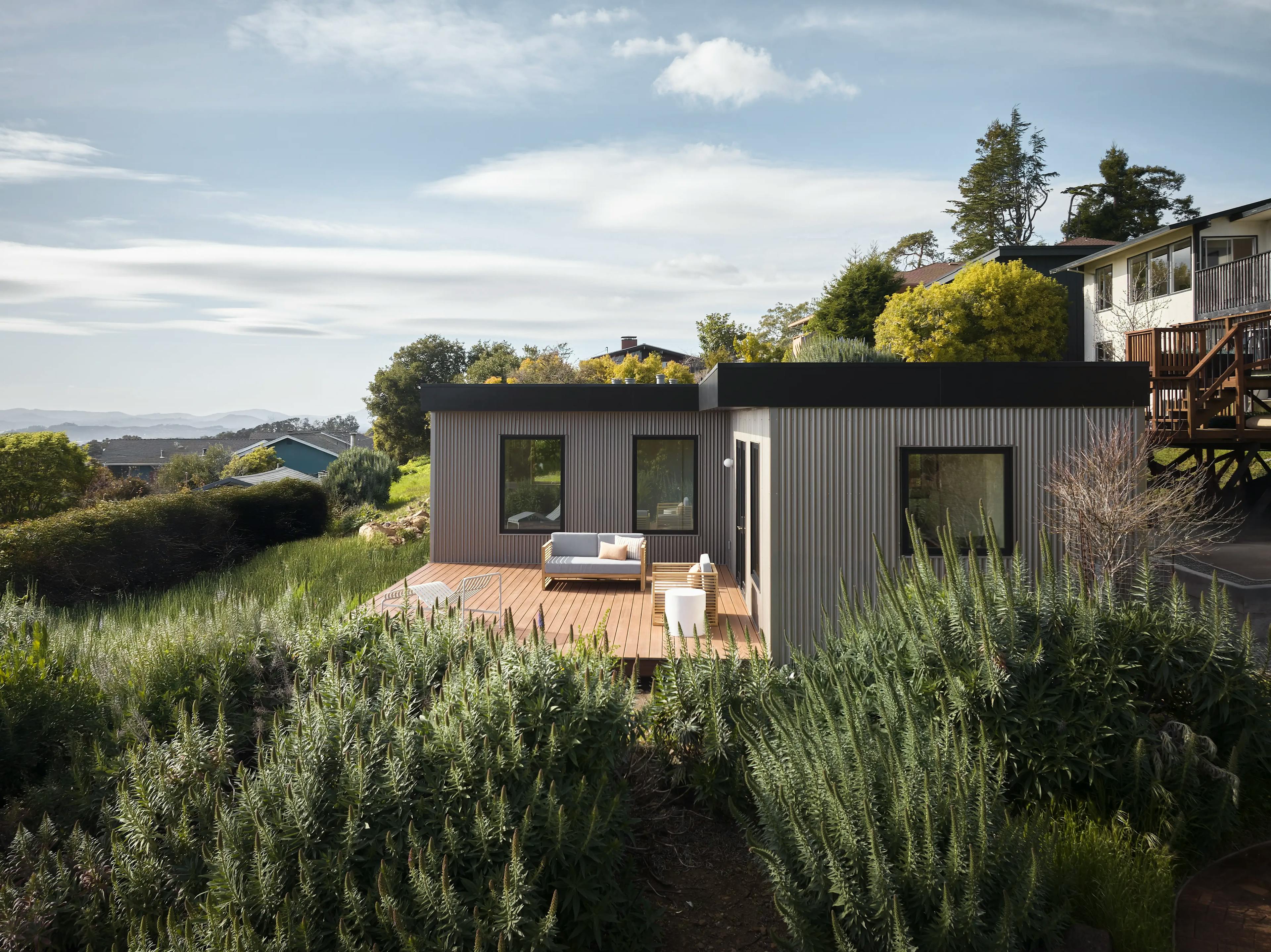
So now you are starting to find someone to partner with to help you build this. Did you have any essential design features or qualities when you started your search?
Rick:
Yes, there were. Initially, we thought we could crane a prefab house in, that it would be really quick and easy. It didn't turn out that way, and they couldn't do it because we were too far from the street, and we had problems with PG&E. We researched it a lot. We looked at a lot of different models and companies, and Type Five stood out. 90% of the companies had designs that were just not up our alley. We're modernist by nature, and Type Five easily had the sleekest and coolest interiors of any of the ones we saw. You’re in Berkeley, close to us, and you’re a solid company. We thought Type Five had no competitors. We could play with your website, which wasn't an option in many places. You get a printout right away, which was nice. It’s a great feature.
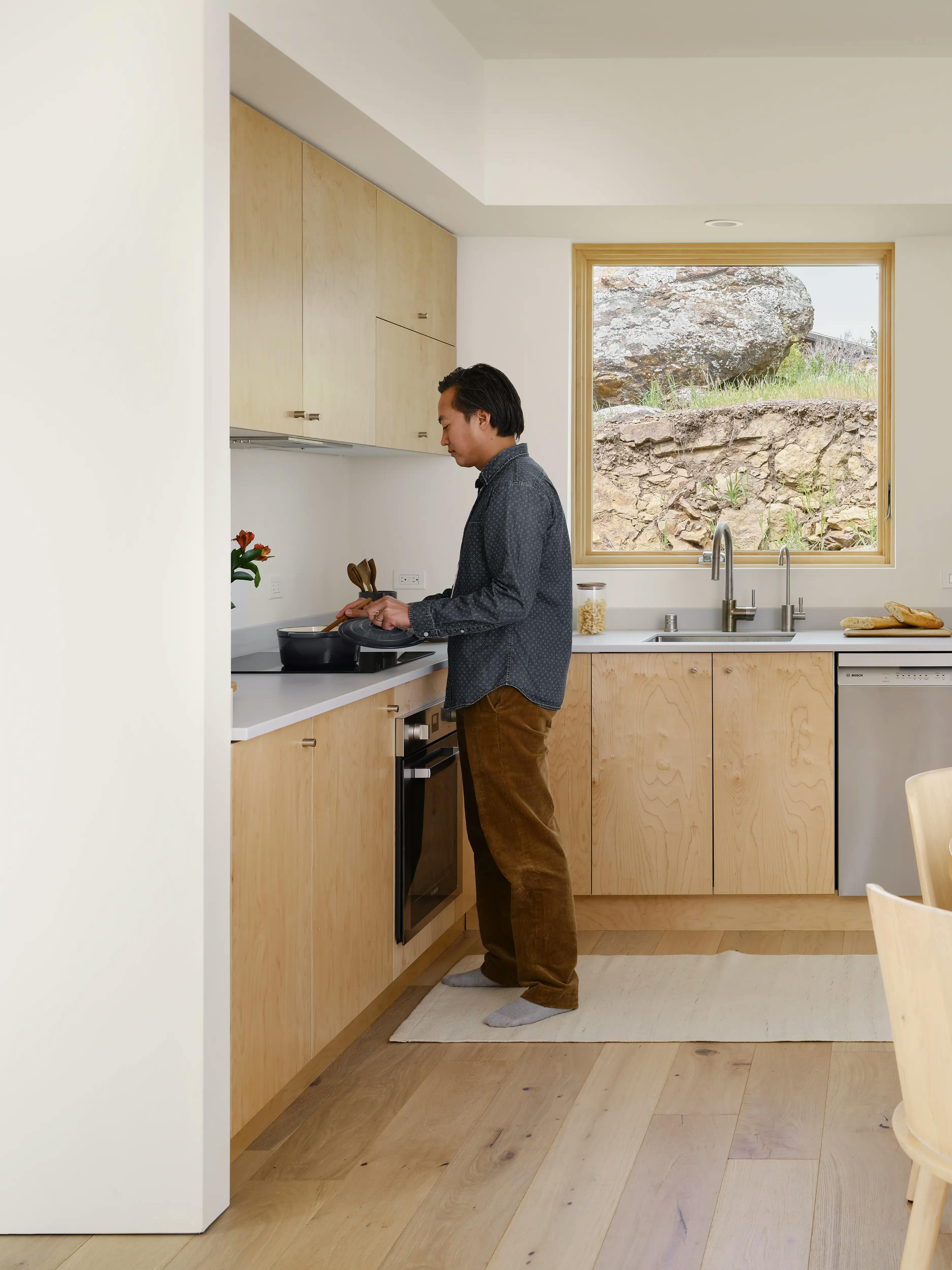
Type Five stood out. 90% of the companies had designs that were not up our alley. We're modernist by nature, and Type Five easily had the sleekest and coolest interiors of any of the ones we saw.
What was your experience throughout the design process, permitting, and construction?
Chris:
The design process went well. The biggest consideration and scary proposition was we didn't want to obstruct the million-dollar view of the bay from the house. And that was a big concern we communicated, and Type Five understood. It worked out perfectly, not just from an obstruction standpoint, but we weren't expecting to get panoramic views from the ADU in the living room.
That was a huge and pleasant surprise. The interior was easy because you had already built plenty of interiors we could extrapolate from and copy. There was a reason for everything: the window placements, why the windows are big, the cabinetry, and Type Five guided us through it all and made it simple. It's a sensible layout. There weren't a lot of hard decisions because Type Five already had experience building similar units with the aesthetic we liked. And it was fun to design a living space.
Rick:
We loved the shed roof, but couldn't use it because it would have obstructed the view. Losing the shed roof and switching to a flat roof was no issue. Altering anything, typically, if you have an architect and want to make some changes, comes out three weeks later. But making design changes like that with Type Five was very quick.
Lucy:
It was collaborative.
Rick:
The permit process was amazing. We got a permit very quickly.
Lucy:
The El Cerrito Planning Department can be challenging with delays. Rick has had a lot of experience with them because he was a general contractor. But Type Five moved this project through the various inspections without a problem and in fact, the main inspector contacted Aleksis and asked if he could bring his team by here to see how it should be done. That was pretty amazing.
Rick:
At the end of the build, the price Type Five gave us was the price it came in at. I was waiting at the end to see if the last payment would equal what we agreed on in the contract, and it did.
A lot of homeowners would love to know about financing since this is a big part of how you can make this happen. Can you share how you financed this project?
Rick:
We took out a second mortgage, which Chris assumed and which provided him an investment opportunity.
You were able to leverage the equity from your current property to do this instead of going through the typical first-time home buyer financing, which is unfortunately, exceedingly difficult for people these days.
Rick:
And the mortgage is less than his rent would be if he were renting a one-bedroom in El Cerrito.
Lucy:
It was really important to initiate that financing as early on as we could because it was kind of a parallel track with the design. We needed to know if we could get that financing approved when we're signing off on the design. You have to really take care of that.
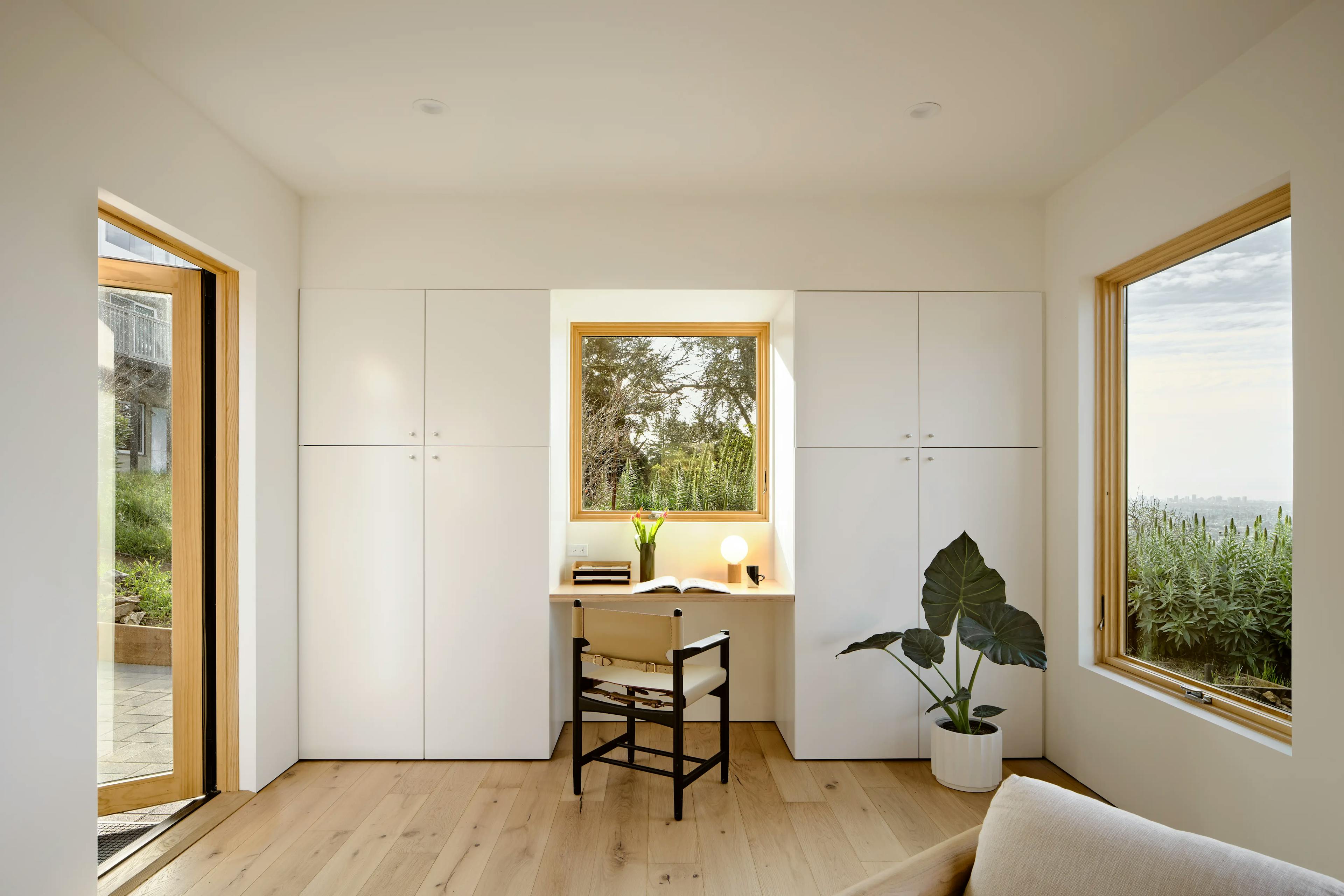
What’s your favorite thing about your ADU?
Chris:
I'll start off with the natural light. I never really had a lot of natural light in the places I lived before, and my last place was in a foggy part of San Francisco that just didn't get much sun in general.
The ADU has these great big windows everywhere, so there's this glow inside the apartment.
It's also really cool how the ADU is embedded into the backyard. I feel surrounded by nature even though there's houses fifty feet away, but there's also birds and trees and plants. Everything's so well laid out. The high ceilings are great. It's very comfortable. Everything makes sense the way it's laid out. It's a great size. It's 700 square feet. It's compact, but spacious enough.
Lucy:
Every window has an incredible view.
Chris:
It's the size of the windows. Fantastic. It's like you're looking at a painting because of the way they're framed.
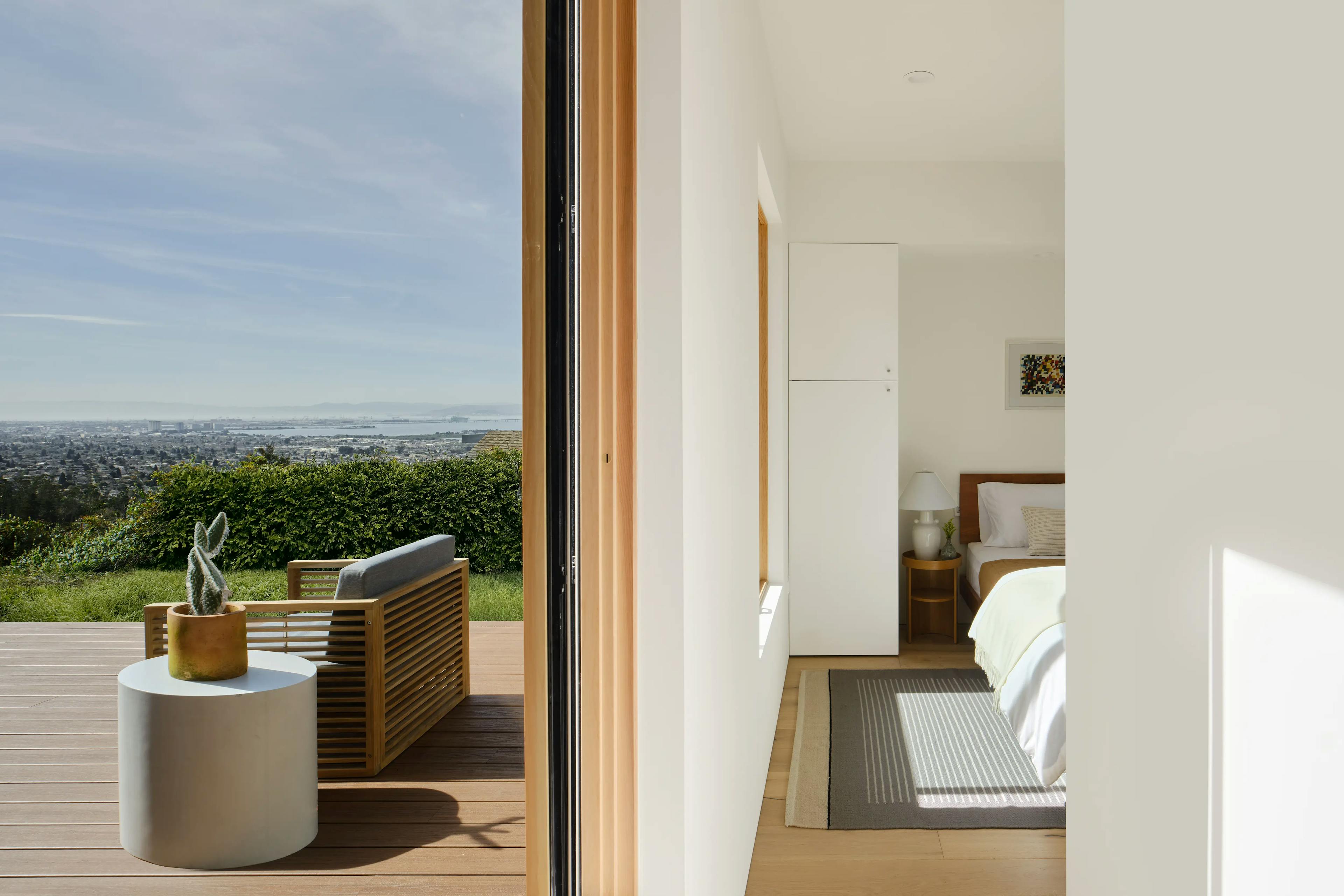
How has the ADU changed your daily life?
Chris:
It's been reinvigorating and very restful. I'm sleeping well. I look forward to coming home at the end of every day. And I do two work-from-home days a week, and it’s a treat to work there all day. I’m also motivated to work on the yard because there's this beautiful building there and it's very rewarding. It’s given me a new hobby.
Lucy:
We're really glad we did this.
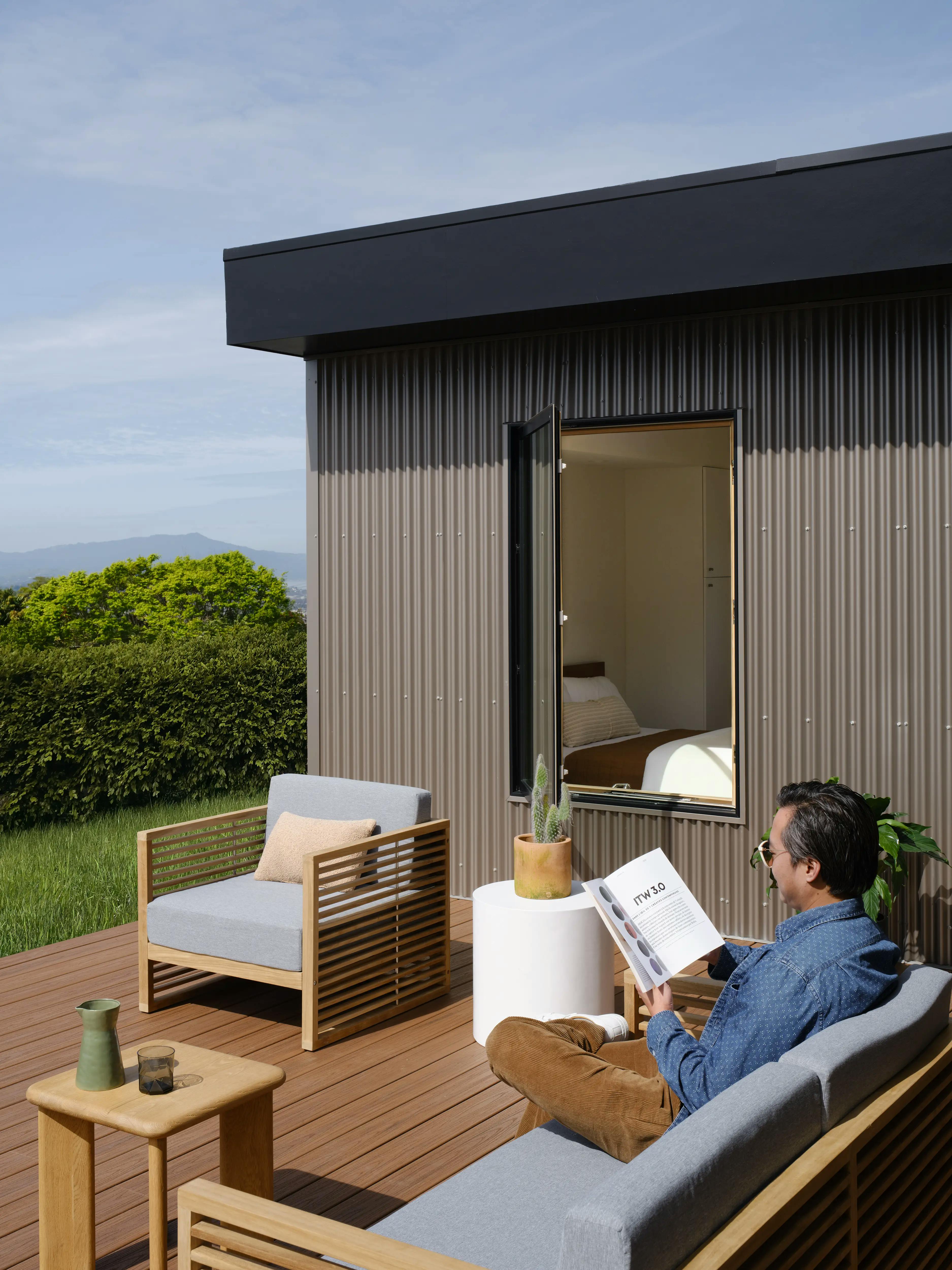
Lastly, what advice would you give anyone interested in going through this process?
Lucy:
Do your homework. Spend the time on the front end to pick the company that is best aligned with what you think you want. Then everything falls into place.